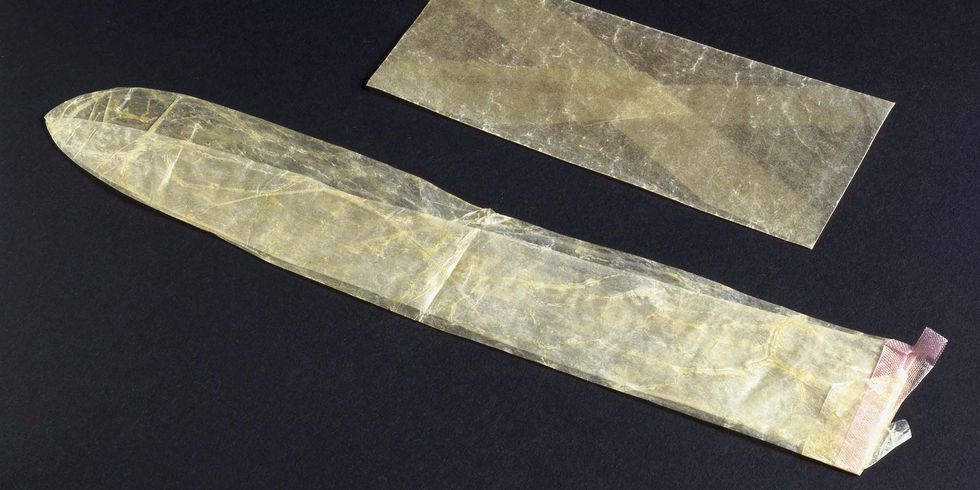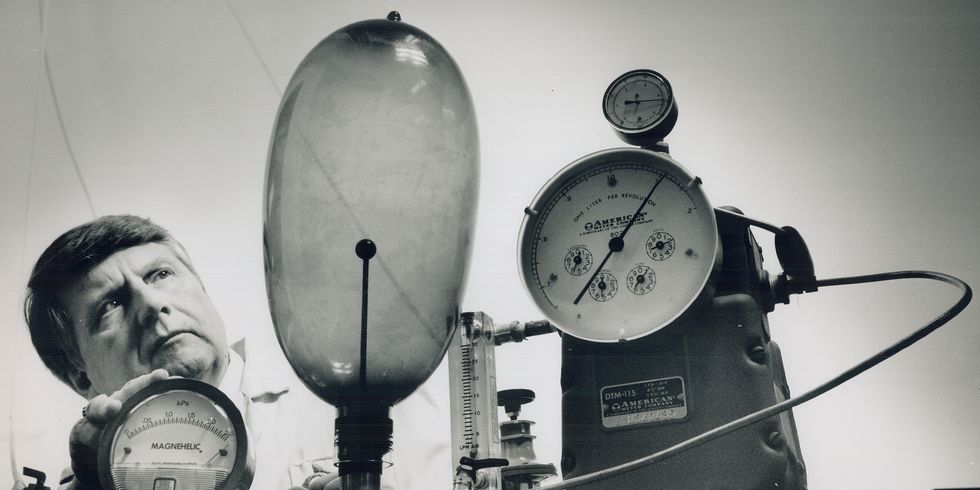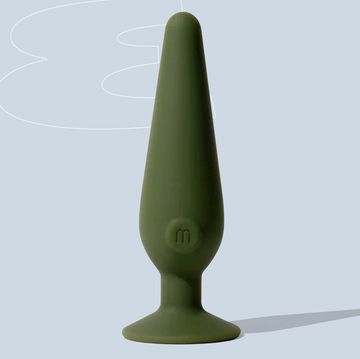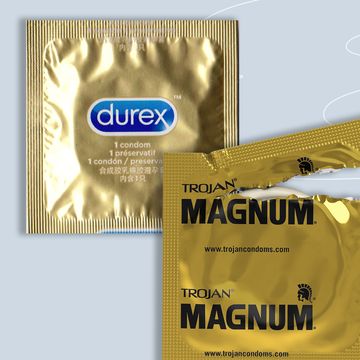Through the annals of history, sex-having folk have discovered ingenious, practical—and frankly, disgusting—ways to cover their penises. No matter the civilization, religious creed, or venereal disease in vogue, the old adage has always held: Wrap it before you tap it. Here, a brief history of the condom.
Condoms of Ancient Times
Depending on how you interpret cave drawings, the first known use of a condom was around 11,000 B.C. in France. A painting on a cave wall shows a man and woman having sex, and the man really looks as if he's covered himself in animal skin. If it made it onto a cave wall, it had to have been memorable. Or, the artist was a big sap.
King Minos of Crete, known for Minotaur mythology and for having "serpents and scorpions" in his semen—that's the way to a woman's heart, no question—used a condom around 3,000 B.C. to protect his wife from said serpents and scorpions. Historians believe a goat's bladder was used during intercourse.
Fast forward 4,000 years, and we get the Egyptians, who used linen sheaths to protect against tropical diseases. The sheaths were colored to represent class status—not even sex was free of social baggage.
Historical gossip has it that the Ancient Romans, besides wrapping it in linen or animal intestines and bladders, used the muscles of their slain combatants as condoms. A Freudian nightmare, that one, but don't believe every rumor you hear.
Ancient Japanese men used a sheath made of tortoise shell—yes, tortoise shell—to cover the tip of the penis. Leather alternatives were available, you know, when the tortoise shell was getting uncomfortable.
The Condom Renaissance
True Renaissance man Gabriele Falloppio described his experiments with a linen condom tied with a bow—for that extra touch—and lubed up with saliva in 1533. Butchers during the time also fashioned condoms from lamb and goat intestines. Waste not, want not.
But the modern moniker for the contraceptive device likely appeared when King Charles II of England asked his doctor, Colonel Condom—strapping fellow, I'm sure—to fashion a device to prevent the birth of even more of the king's illegitimate children. Again, animal innards were still all the rage. Aren't you just so thankful for the invention of rubber?
Condom Modernity
Rubber came around during the Industrial Revolution in America, and by the 1860s, rubber condoms were being massed produced. They were even made to size. And in 1920, latex condoms were invented.
From then on, flavors, textures, and lubrication, oh my. Manufacturers marketed to women, like Trojan with the Her Pleasure line, featuring ribbing meant to stimulate the clitoris—which, wouldn't you know, is still located outside the vagina. Spray-on condoms, which are the unicorn dream of condom haters, had a moment. Last year, Swedish singer Zara Larsson put many men to shame by enveloping her entire leg in regular condom, effectively shutting down the idiotic "My dick is too big" argument.
Most recently, Pope Francis suggested condoms could be used to prevent the spread of Zika virus, though not HIV/AIDS or other venereal diseases. When the Pope gets involved, it's safe (98 percent of the time) to say condoms aren't going anywhere.
Choose to be safer.

















